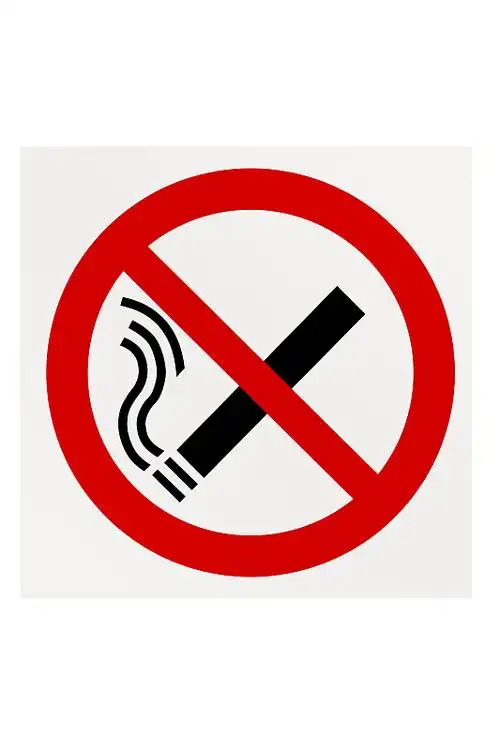The Unseen Link: How Tobacco Use May Increase Monitoring Needs for Women with Breast Nodules
Discovering a breast nodule can be a moment of profound anxiety for any woman. The immediate flurry of questions—What is it? Is it serious? What happens next?—often overshadows the more subtle, long-term considerations of management. In the journey of breast health, a diagnosis often centers on the nodule itself. However, a growing body of evidence points to a critical, modifiable lifestyle factor that significantly influences the path forward: tobacco use.
While the connection between smoking and lung cancer is universally recognized, the impact of tobacco on breast health, particularly concerning benign breast nodules, is a less publicized but equally critical story. This article explores the compelling link between tobacco consumption and the increased need for more frequent follow-up appointments and monitoring for women with breast nodules. Understanding this connection is not about inducing fear, but about empowering women with knowledge to actively participate in their healthcare journey.
Beyond the Lungs: Tobacco's Systemic Assault
To grasp why tobacco affects breast tissue, we must first move beyond the idea that smoking only harms the lungs. Cigarette smoke is a complex cocktail of over 7,000 chemicals, hundreds of which are toxic and at least 70 known to be carcinogens. When inhaled, these chemicals don't just stay in the respiratory system; they enter the bloodstream and travel to every part of the body, including the delicate, hormone-responsive tissue of the breasts.
Two primary mechanisms explain how tobacco increases the follow-up frequency for breast nodules: inflammation and hormonal disruption.
First, let's talk about inflammation. The body perceives many of the chemicals in tobacco smoke as foreign invaders, triggering a persistent state of low-grade systemic inflammation. This inflammatory response can directly irritate breast tissue. For a woman with an existing nodule—a fibroadenoma, a cyst, or any other benign growth—this constant irritation can cause the nodule to become more prominent, tender, or swollen. This change in size or sensation is a primary reason a radiologist or surgeon would recommend a shorter interval between follow-up scans. A nodule that appears stable in a non-smoker might show enough fluctuation in a smoker to warrant closer observation, a key reason for the need for increased monitoring of breast nodule changes in female smokers.
Second, and perhaps more profoundly, is tobacco's effect on hormones. Breast tissue is exquisitely sensitive to estrogen and progesterone. Many benign breast conditions, such as fibrocystic changes, are driven by hormonal fluctuations. Research has shown that smoking has a complex, anti-estrogenic effect. It can alter the way the liver metabolizes estrogen, leading to a different balance of estrogen metabolites in the body. Furthermore, certain chemicals in tobacco can directly bind to estrogen receptors in breast cells, mimicking or blocking the natural hormone's action. This hormonal chaos can create an unstable environment within the breast. It can promote the growth of new nodules or cause existing ones to behave unpredictably. This instability is a major driver for the necessity of more frequent breast ultrasound screenings for women who use tobacco products.
The Diagnostic Gray Zone: How Smoking Clouds the Picture
The challenges don't stop at nodule behavior. Tobacco use can actively complicate the diagnostic process itself. Mammograms and ultrasounds are the primary tools for monitoring breast nodules. Radiologists look for specific characteristics—clear margins, shape, density, and acoustic enhancement—to distinguish between clearly benign findings and those that require a biopsy.
Chronic smoking can lead to broader breast tissue changes, a condition sometimes referred to as "smoker's breast" in radiological circles. The persistent inflammation can increase breast density or cause fibrotic (scar-like) tissue to develop. On a mammogram, dense breast tissue appears as a solid white area, which can mask the appearance of a small nodule, also white. This is like looking for a snowball in a snowstorm. It makes detection harder and can obscure subtle changes in a known nodule over time.
Consequently, a radiologist reviewing the scans of a woman who smokes might face a more ambiguous picture. Is that slight change in the nodule's border a result of the underlying inflammatory tissue, or is it a sign of something more concerning? Is the overall density making it impossible to be completely confident about the nodule's stability? In these situations, erring on the side of caution is the standard of care. This caution directly translates into a recommendation for a shorter follow-up interval, perhaps 6 months instead of a year, to ensure that any potential progression is caught at the earliest possible stage. This is a direct example of how tobacco use influences breast nodule follow-up care plans, creating a more vigilant and frequent monitoring schedule.
The Ripple Effect: From Clinical Guidance to Personal Reality
Receiving a recommendation for a six-month follow-up instead of an annual one has tangible effects on a woman's life. Each appointment carries its own weight—the time off work, the cost of co-pays, the logistical challenge of arranging childcare, and, most significantly, the emotional toll of recurring "scanxiety." The period leading up to a follow-up appointment can be filled with worry and anticipation. For a woman who smokes, this cycle occurs twice as often, doubling the annual burden.
This is where the concept of shared decision-making becomes vital. A healthcare provider might explain the situation as follows: "Based on what we see today, your nodule is most likely benign. However, because you smoke, there are some inflammatory changes in the surrounding tissue that make it a bit harder to be 100% certain it's completely stable. Therefore, for absolute peace of mind and to be extra safe, I'd like to see you back in six months to make sure nothing has changed."
This conversation frames the increased follow-up frequency not as a punishment, but as a tailored, precautionary measure. It shifts the narrative from a passive "I have to go back because of my smoking" to an active "I am choosing closer monitoring to ensure my health, and I understand that my smoking is a factor in that decision." This understanding is crucial for the management of breast health in women with nicotine exposure history.
A Path Toward Empowerment and Clearer Scans
The most empowering aspect of this entire discussion is that tobacco use is a modifiable risk factor. Unlike family history or genetic predisposition, this is an element within a woman's control. Quitting smoking is one of the most powerful actions a woman with breast nodules can take for her long-term health.
The benefits begin almost immediately. As the body rids itself of tobacco's toxins, systemic inflammation begins to subside. Over months and years, the hormonal disruptions caused by smoking start to normalize. The breast tissue, no longer under constant chemical attack, can become less dense and inflamed. This often leads to clearer, more easily interpretable mammograms and ultrasounds.

For many women, this positive change can directly impact their follow-up schedule. A nodule that was once watched every six months due to tobacco-related tissue changes might, after a sustained period of smoking cessation, demonstrate such stability and clarity that the radiologist feels confident in extending the follow-up to a standard annual interval. The decision to quit smoking is, therefore, not just about reducing the long-term risk of cancer and heart disease; it is a direct investment in reducing the immediate burden and anxiety of frequent breast monitoring. It is a proactive step in minimizing the need for heightened breast nodule surveillance linked to lifestyle factors.
In conclusion, the journey with breast nodules is deeply personal, but it is not one that has to be navigated blindly. The link between tobacco use and increased follow-up frequency is a clear example of how lifestyle choices intersect with clinical care. By understanding that smoking contributes to tissue inflammation, hormonal imbalance, and diagnostic challenges, women can see the direct consequence of this habit on their healthcare experience. This knowledge provides a powerful incentive—not only for the profound long-term benefits but for the immediate reward of a less burdensome, less anxious path to managing breast health. The goal is always clearer scans, greater peace of mind, and a proactive partnership between a woman and her healthcare team.











